
When you reach to the starting point of the Doraemon Tokyo 2017 Art Exhibit at Roppongi Hills, you are first greeted with a message:
The starting point for this exhibition was a request we made to a number of artists: to create their own Doraemon. I was delighted when virtually all the artists agreed to take part, and we received 28 fantastically different takes on Doraemon.
The types of work submitted are incredibly varied, encompassing painting, sculpture, photography, animation, and even lacquer work. The ages of the artists involved are similarly assorted, ranging from people in their twenties to those in their sixties. Many of the foremost figures in the Japanese art world agreed to participate, and I also asked a number of people who are as yet relatively unknown, but whose talent I strongly believe in.
Doraemon is a hugely important character in Japan. Most Japanese artists will have been acquainted with him from their earliest years, as part of their everyday worlds.
In fact, I believe we could even call Doraemon part of the Japanese environment. I’m desperately excited to see the artwork that the people living within that Doraemon-infused environment have produced all in one place. I’m also hoping that visitors to the exhibition will be surprised and delighted by the new versions of Doraemon that have been dreamed up here.
Yuji Yamashita (Meiji Gakuin University professor)
When you first walk inside, you are greeted with created structures with a light that showcases the shadows on a blue wall.

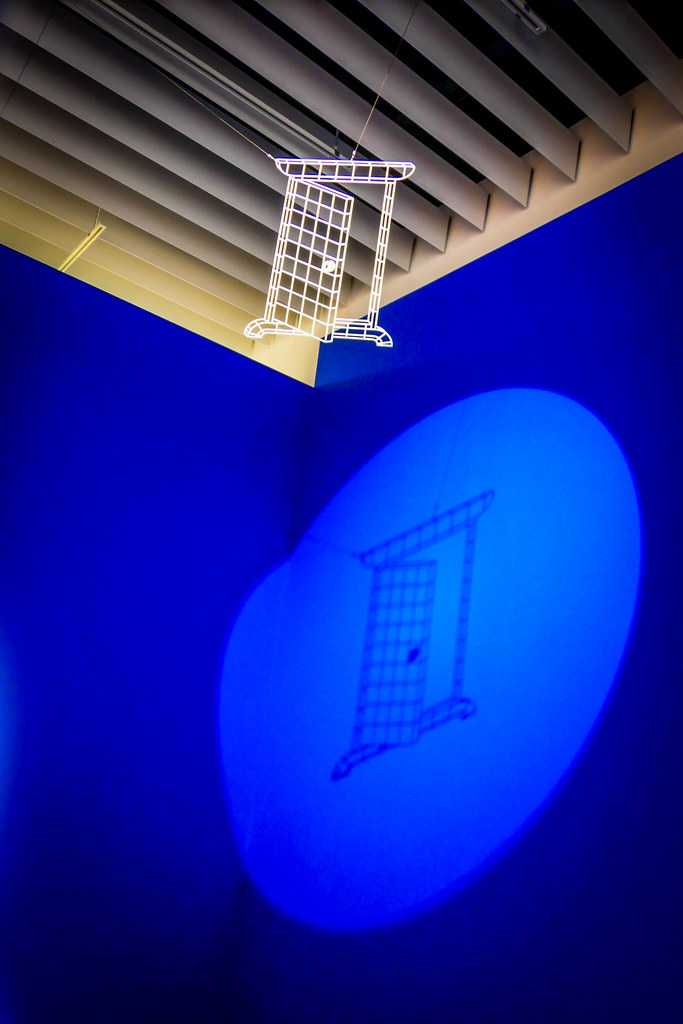
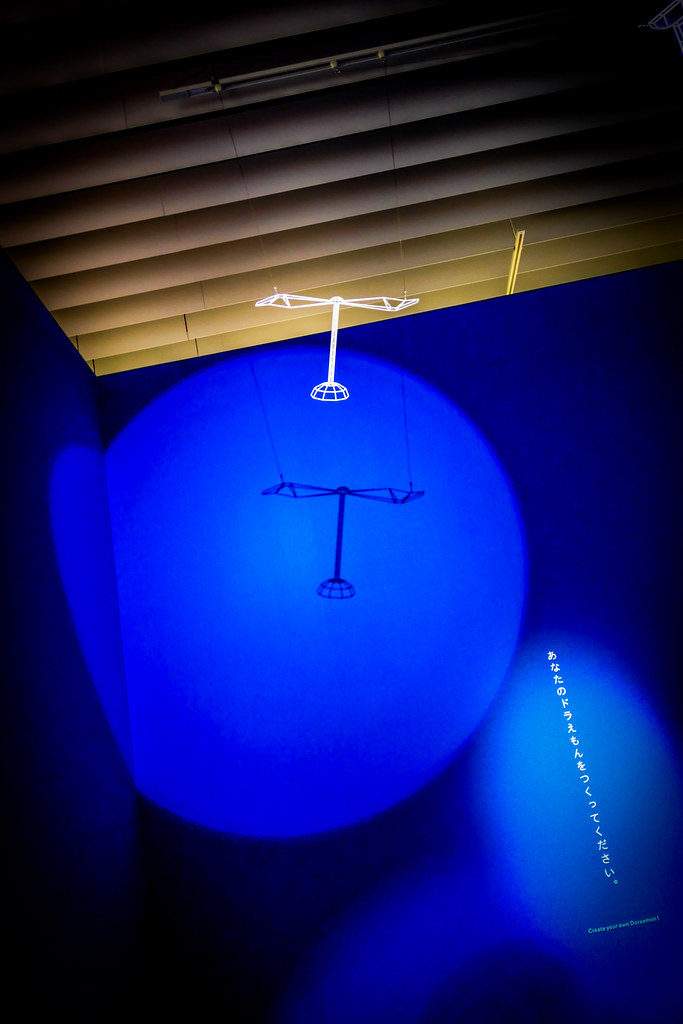
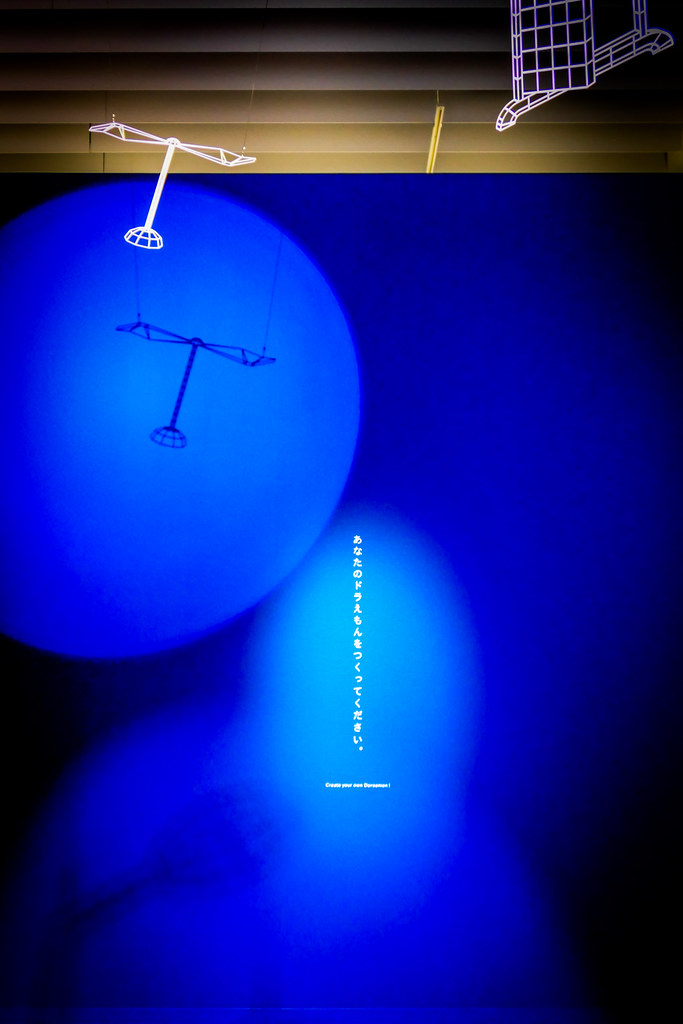
You then approach the next artwork:
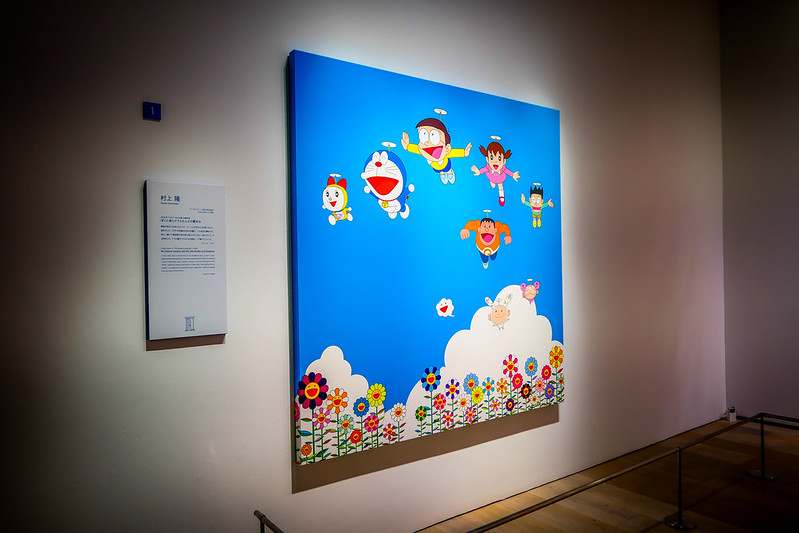

The artwork titled “My Summer Vacation with My Little Brother and Doraemon” by Takashi Murakami features Doraemon, Nobita and friends flying over flowers with propellers over their head.
The painting is acrylic on canvas and was last presented at “The Doraemon exhibition” back in 2002.
According to Murakami, his goal was to approach the painting with an innocent, earnest frame of mind.
Murakami said of the painting, “The painting is set in those days, early summer in Japan, in the first few years of the 1970s. I ended up taking a dive back to a time when I was playing with my brother in a vacant lot in an industrial zone. I guess this is about an escape from the reality of the oil drum”.

The next painting absolutely captivates you with its vibrant colors and plethora of characters.
Titled “Wouldn’t it Be Nice if We Could Do Such a Thing” by Takashi Murakami, the painting was created in 2017 and features acrylic, gold leaf, platinum leaf on canvas mounted on an aluminum frame.
According to Murakami, “While I was pondering over what was the most important thing in the Doraemon series, I realize that maybe Fujiko F. Fujio himself had the key. When I inserted him into the picture, it was as if the whole thing had suddenly come alive. The development of manga in Japan after the Second World War is unprecedented; there’s been nothing like it anywhere around the world. It’s an art form, an aspect of culture that Japan pioneered and developed”.
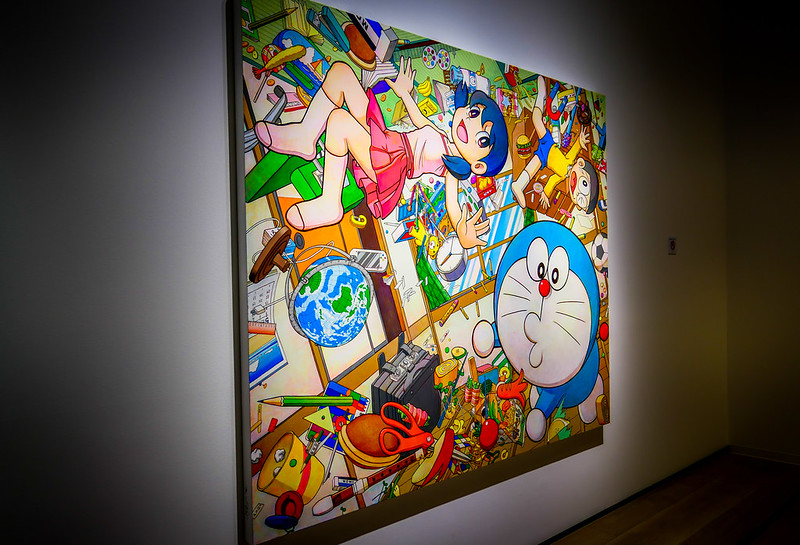
The next painting by Takashi Murakami is titled “Gravity Adjuster” painted with acrylic on canvas.
Created in 2017, Murakami wrote, “I dreamed up a scene where everyday elements coexist with the out of the ordinary. I studied the Doraemon manga to get an accurate grasp of the layout of Nobita’s room – which also often appears in the animation -and then recreated this as accurately as I could. Flying freely around the room, are things like items of stationery, candies, toys and so on, which have been freed from gravity by the “Gravity Adjuster”, one of Doraemon’s Gadgets”.
When writing about what he wanted to achieve with the painting, Murakami wrote, “I hope that the painting allows people to experience the world of Doraemon – where the present commingles with the future – coming together with their everyday worlds”.
In tomorrow’s blog, part 3 will continue with “The Doraemon Tokyo 2017 Art Exhibit” at Roppongi Hills, looking at the paintings of Miran Fukuda, the photography work of Mika Ninagawa and more.
